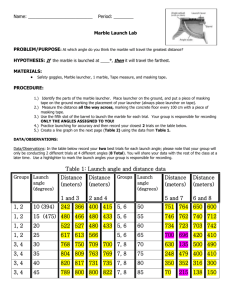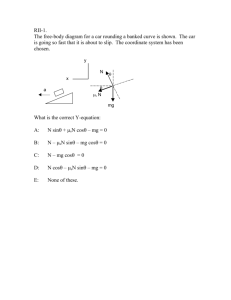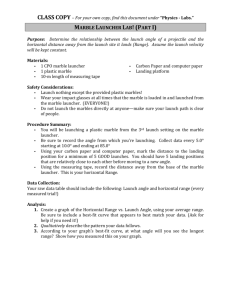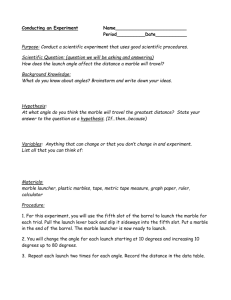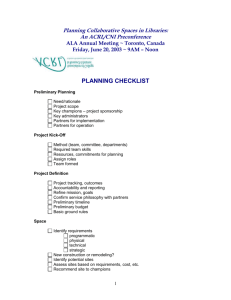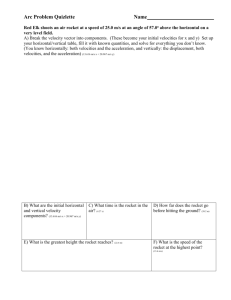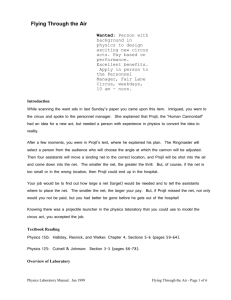Physics
advertisement
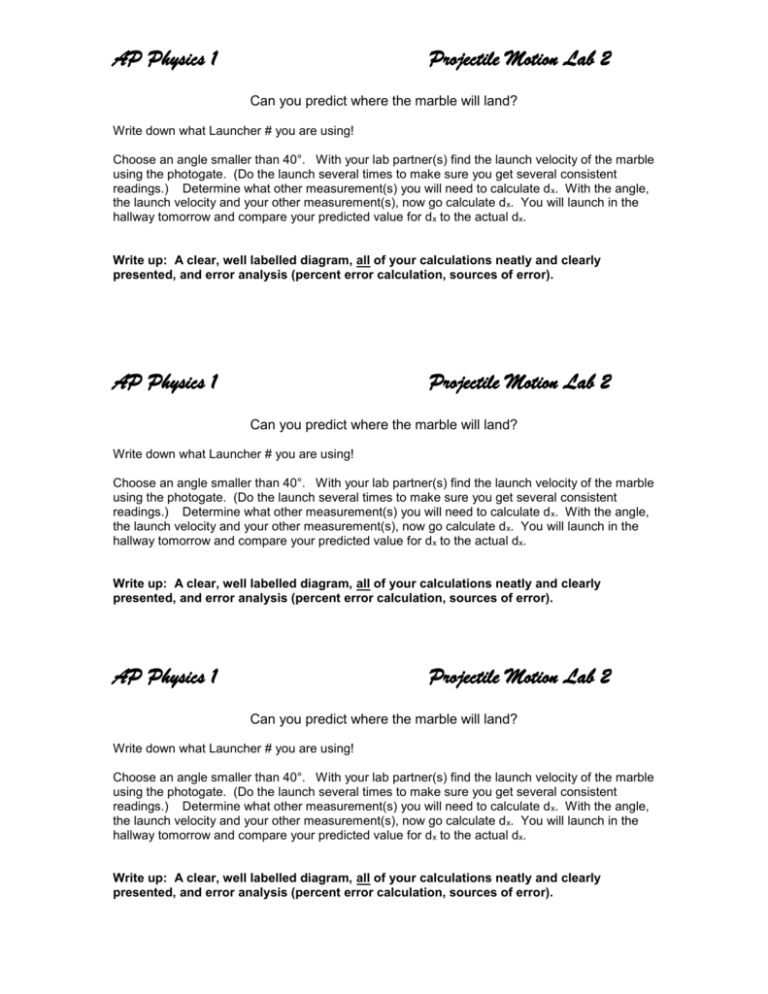
AP Physics 1 Projectile Motion Lab 2 Can you predict where the marble will land? Write down what Launcher # you are using! Choose an angle smaller than 40°. With your lab partner(s) find the launch velocity of the marble using the photogate. (Do the launch several times to make sure you get several consistent readings.) Determine what other measurement(s) you will need to calculate d x. With the angle, the launch velocity and your other measurement(s), now go calculate d x. You will launch in the hallway tomorrow and compare your predicted value for d x to the actual dx. Write up: A clear, well labelled diagram, all of your calculations neatly and clearly presented, and error analysis (percent error calculation, sources of error). AP Physics 1 Projectile Motion Lab 2 Can you predict where the marble will land? Write down what Launcher # you are using! Choose an angle smaller than 40°. With your lab partner(s) find the launch velocity of the marble using the photogate. (Do the launch several times to make sure you get several consistent readings.) Determine what other measurement(s) you will need to calculate d x. With the angle, the launch velocity and your other measurement(s), now go calculate d x. You will launch in the hallway tomorrow and compare your predicted value for d x to the actual dx. Write up: A clear, well labelled diagram, all of your calculations neatly and clearly presented, and error analysis (percent error calculation, sources of error). AP Physics 1 Projectile Motion Lab 2 Can you predict where the marble will land? Write down what Launcher # you are using! Choose an angle smaller than 40°. With your lab partner(s) find the launch velocity of the marble using the photogate. (Do the launch several times to make sure you get several consistent readings.) Determine what other measurement(s) you will need to calculate d x. With the angle, the launch velocity and your other measurement(s), now go calculate d x. You will launch in the hallway tomorrow and compare your predicted value for d x to the actual dx. Write up: A clear, well labelled diagram, all of your calculations neatly and clearly presented, and error analysis (percent error calculation, sources of error).
